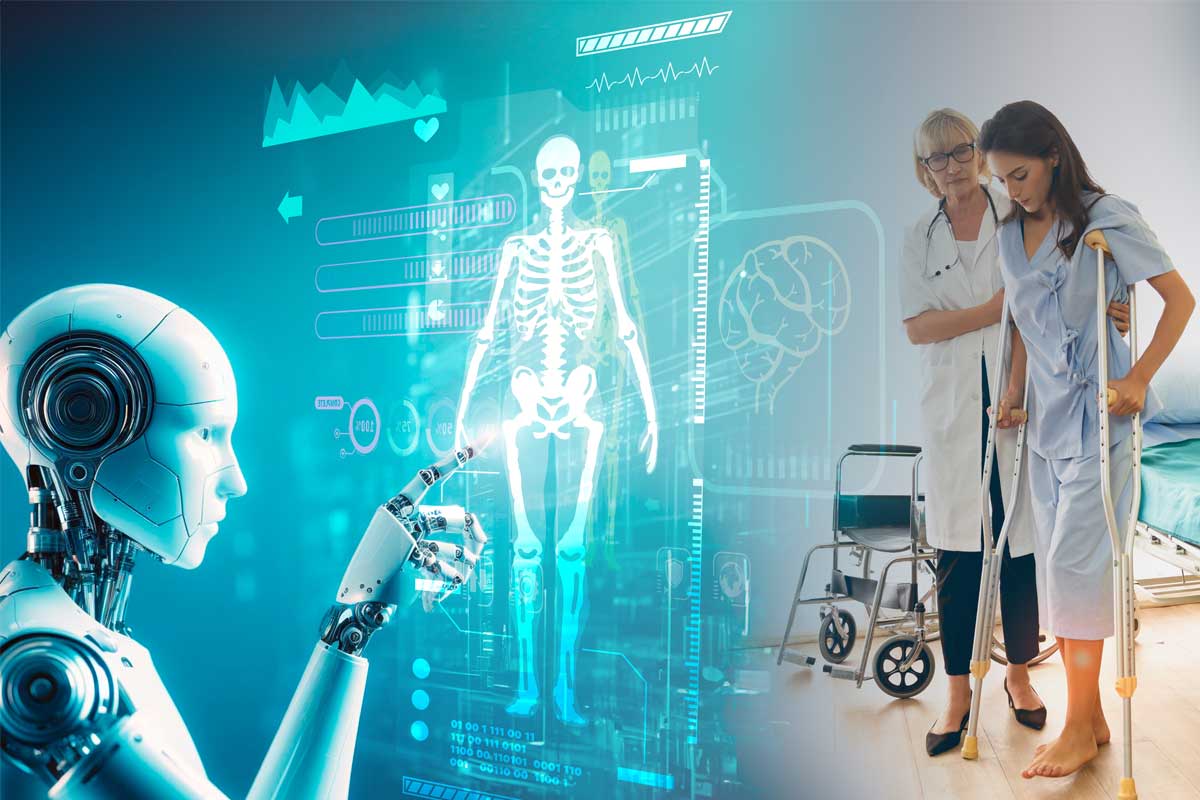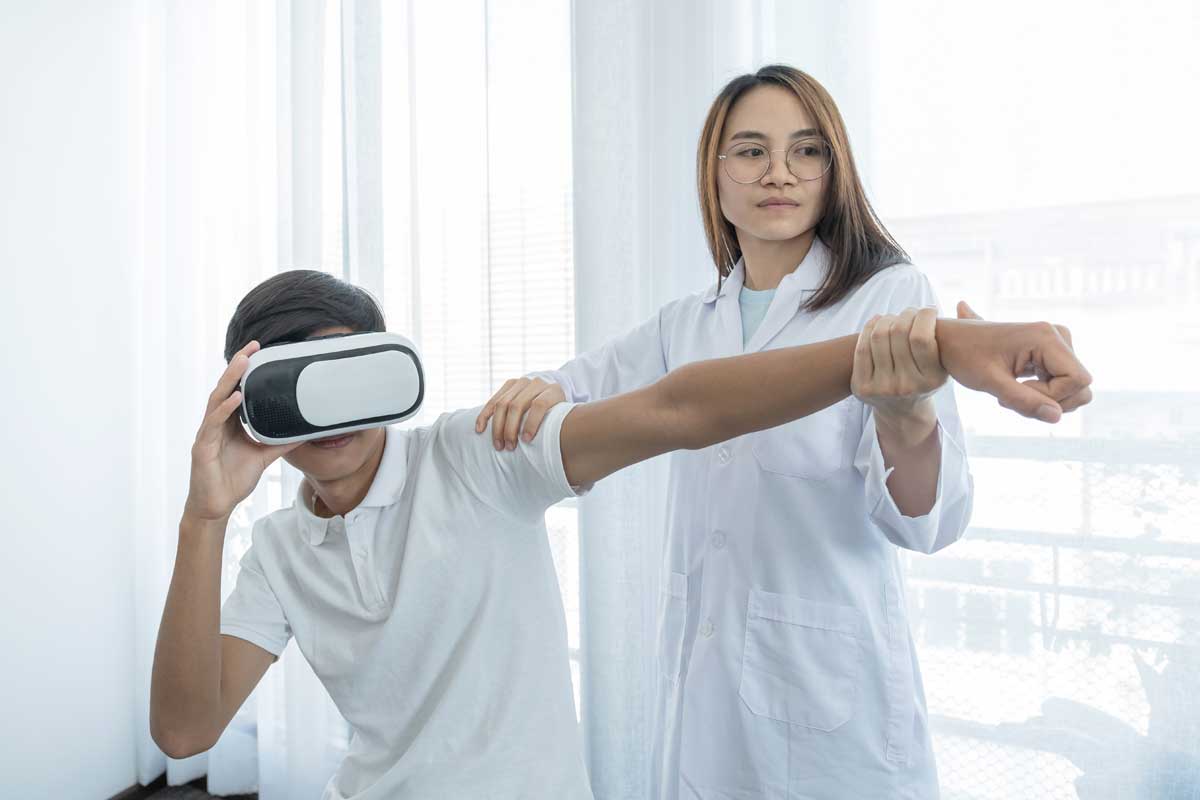
You went for a run and sprained your ankle or pulled something in your back while lifting the couch to find the remote. With millions of injuries per year, it is likely that at some point, you’ll need to see a physical therapist. Roughly 8.6 million injuries happen a year, with many of them requiring long-term therapy care1. Some of the most common injuries that require physical therapy (PT) are soft tissue injuries like sprains, strains, or tears, with many of them occurring during sports or exercise. But as people age, wear and tear on their bodies might lead to the breakdown of various muscles and tendons.
Devices that are part of the Internet of Things (IoT) ecosystem are increasingly used in care for customized plans and treatments, remote monitoring, and increased accessibility. IoT aims to move the world of physical therapy forward by reducing pain, allowing for increased access to exercises, and continuous remote monitoring of data and movement.
How IoT is Changing Physical Therapy
IoT devices are making their way into every aspect of healthcare, from fitness trackers to medical wearables to biometrics for early detection of diseases and diagnostics, and physical therapy is no exception. The goal of physical therapy is to promote, maintain, or restore health through treatments like targeted exercises, massages, movement, and more. Physical therapy aims to restore functional movement, and patients typically go through treatment plans that take weeks or months.
IoT is changing how people get treated with customized plans, monitoring, accessibility, and more accurate treatment programs.
Remote monitoring
While physical therapy sessions often happen in person, many treatment plans require at-home exercises and stretching or could even replace being physically present for an appointment. Home care is just as important as in-person sessions, and IoT wearable devices such as wearable sleeves with sensors can help monitor patients’ daily movement and encourage accountability. Through user consent, these devices can send the patient health vitals or range of motion information that doctors can use to track their patients’ progress and even adjust exercises as necessary.
Increased accessibility
A full physical therapy plan is often an intensive time commitment. Some individuals might not be able to take off work or live in a rural area where commuting to a therapy center isn’t feasible. Wearables can help reduce these barriers by providing access that works around the patient’s schedule. Improved accessibility also increases the likelihood a patient stays committed to their treatment plan and makes a full recovery because they can do it from the comfort of their homes.
Customized, accurate treatment plans
IoT devices can allow for highly individualized physical therapy plans through the use of wearable sensors that capture minute details of a patient’s movement. For example, many smartwatches and smart bands these days can measure small nuances in gait, balance, and range of motion with higher accuracy than the human eye. With thousands of data points aggregated into actionable insights for physical therapists, providers can create more customized, targeted plans that improve patient outcomes and speed recovery.
Trends in IoT Physical Therapy
Like many other healthcare sectors, physical therapy is seeing a massive transformation in the adoption of IoT and physical therapy.

Virtual and augmented reality
Virtual reality (VR) and augmented reality (AR) are not only helping manage pain in physical therapy, but they are also creating more immersive experiences for rehabilitation. VR and AR create engaging, unique experiences for patients to try out exercises, and they’re also used to facilitate remote supervision.
Gamification
Research shows gamification leads to positive outcomes, and with physical therapy, the desired outcome is often a speedier recovery. This might come in the form of reward challenges or even video games in motor rehabilitation care for clinical conditions like Parkinson’s or cerebral palsy2.
Real-world Applications
Take a look at some of the companies innovating physical therapy technology through the use of wearable devices or sensors.
Ekso Bionics
Ekso Bionics created exoskeleton technology to help patients regain mobility after strokes and spinal cord injuries or after a diagnosis of multiple sclerosis3. Utilizing their devices, patients can improve their walking gait and balance through robotic exoskeletons.
Cipher Skin
Cipher Skin’s motion and biometrics tracking technology connects in-clinic therapy with at-home care and improves remote patient monitoring4. The wearable devices use advanced sensor technology in “smart sleeves” and chest motion sensors to capture motions. Real-time insights and a continuous feed of patient data are sent to providers, allowing physical therapists to adjust treatments.
Cleveland Clinic research
In this research study out of Cleveland Clinic, virtual reality was used with an omnichannel treadmill to create an immersive grocery store experience5. Not only was it helpful in identifying early-stage Parkinson’s, but it also helped to train patients to improve their walking gait in a natural setting.
Outlook of IoT for Physical Therapy
As IoT devices, virtual reality headsets, and healthcare wearable devices become more popular, costs will likely decrease and make these edge intelligence technologies more accessible for more clinics, providers, and patients. The global IoT market is expected to grow 23% from 2022 to 2030, highlighting the need for flexible hardware devices connecting people and data worldwide6. IoT in healthcare alone is expected to hit $348 billion in market size by 2030, and as VR and AR continue to develop, more wearables will integrate these technologies7.
Artificial intelligence will also continue to improve these battery-powered, energy-efficient IoT devices with data visualizations, trends and predictive analysis, and more.
How Ambiq is Contributing
For over a decade, Ambiq has pioneered ultra-low powered System on Chips (SoCs) that extend the processing capability and battery life in a variety of smart devices. With a growing market for smart medical devices, manufacturers developing IoT devices for physical therapy can create more powerful wearables that offer remote monitoring, increased accessibility to patients, better treatment plans, and more positive outcomes. Learn more about Ambiq products here.
Sources:
1 Sports and Recreation-Related Injuries Top 8.6 Million Annually | January 4, 2017
2 Gamification in Musculoskeletal Rehabilitation | October 27, 2022
3 Ekso Bionics | 2023
4 Cipher Skin | 2023
5 The Immersive Cleveland Clinic Virtual Reality Shopping Platform for the Assessment of Instrumental Activities of Daily Living | July 28, 2022
6 IoT Market size growing with a CAGR of 23.10%: Growth Outlook from 2022 to 2030, projecting market trends analysis by Application, Regional Outlook, and Revenue | December 19, 2023
7 IoT in Healthcare Market Size & Share Analysis – Growth Trends & Forecasts (2024 – 2029) | 2023


